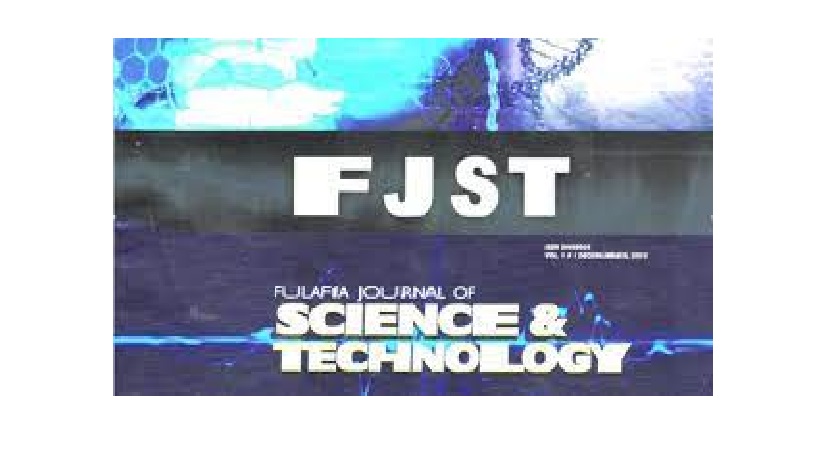Assessment of Alpha spin nanoparticles and Genetic Diversity in Nigeria Sesame (Sesamum indicum L.) Germplasm
DOI:
https://doi.org/10.62050/fjst2025.v9n2.633الكلمات المفتاحية:
Alpha Spin, Nanoparticles, genetic diversity, Sesameالملخص
An experiment was carried out during the cropping season of 2025 in the Botanical Garden, Department of Plant Science and Biotechnology of Federal University of Lafia, Nasarawa State-Nigeria to investigate the influence of Alpha spin nanoparticles on the Genetic diversity of sesame. The seeds were exposed to Alpha pin Nanoparticles at 20min, 40min and 60min alongside the untreated (control). The experiment was laid out in a Randomized Complete Block Design (RCBD) with three replications. Data were collected on the basis of plant height, Number of pods/plant, Number of seeds/pod, 1000seeds weight. Data collected were subjected to Analysis of Variance (ANOVA). The result revealed that most of the parameters were significant at 0≤ 0.05. Highest mean plant height was observed in variety FUTM9 (98.03), while OMA 40 (41.83) has the least plant height. The result also showed that FUTM7 (31.21) has the highest number of pods/plant while OMA 40, has the least number of pods/plant. FUTM9 (70.22) was observed to have the highest number of seeds/pod while Ex sudan (44.66) has the least number of seeds/pod. NAK033 has the highest dry seed weight (22.60) while FUTM9 has the least dry seed weight (3.89). Highest 1000seed weight was observed in the variety Jig 86 (8.80) while the least was observed in Ex sudan (6.79). Most of the varieties recorded their highest mean performance at T2 which is 40minutes of exposure to alpha nano spin particles. It is recommended that for most of the agronomic traits, T2 (40 minutes exposure time) be applied.
التنزيلات
المراجع
Abubakar, S. S., Onlybe J. E., and Tologbone E. B. (1998). The role of extension research & the information dissemination in enhancing beniseed production and marketing by resource poor farmers in pre-conf. Proceeding. 1st National workshop on Beniseed, March 3-5, 1993. NCRI Baddegi Nigeria 217.
Abubakar, S. S. (1993). The Environment friendly Renewable Energy from sesame biodiesel. Energy Source Part a-Recovery Utilization and Environmental Effects, 32(2), 189-196. DOI: 10.1080/15567030802467480
Alexander, E. A. Kwon-Ndung, E. H. (2024). Alpha- spin-mediated growth improvement for tomato (Lycopersicon esculentum Mill.) varieties in Jauro Yinu, Ardo-Kola LGA, Taraba State. Lafia Journal of Scientific & Industrial Research, 2(2). DOI: 10.62050/ljsir2024.v2n2.330
Arriel, N. H, Di Mauro, A.O., Arriel, E. F., Uneda- Trevisolic, S. H., Costa, M. M., Barbaro, I. M. and Muniz, F. R. (2007). Geneticdivergence in sesame Based on morphological and agrometic traits crop Breeding and Applied biotechnology 7(3), 253-261.
Ashri, A. (1981). Increase genetic variability for sesame improvement by hybridization through induced mutation. Annual report, ARC Abu Naam.
Ashri, A. (1993). Sesame breeding. Plant Breed Rev., 16, 179-228.
Azeez, M. A., and Morakinyo, J. A. (2011). Genetic diversity of fatty acids in sesame and its relative in Nigeria. European Journal of Lipid Science and Technology, 113(2).
Bahrenfus, J.B., and Fehr, W.R. (1984). Registration of harper and lokotasoybean. Crop Sci., 24, 385.
Balses, R. (2003). Balance fertilization of sesame in Vietnam. Foundation For Agronomicres. http://www.ppifar.org/farguran.nsf/web.index/article
Banerjee, P. P., and Kole, P.C. (2010). Heterosis, inbreeding depression and their relationship with genetic divergence in sesame (Sesamum indicum L.). Acta Agronomica Hungarica, 58(3), 313-321.
Baydar, H., Marquard, R. and Turgut, I. (1999). The Pure line selection for improved yield oil content and different fatty acid composition of sesame, Sesamum indicum. Plant Breed., 118(5), 462-464.
Dixit, A., Jin, M. H., Chung, J. W., Yu, H. K., Ma, K. H., Park. Y. J. and Cho, E. G. (2005). In the development of polymorphic microsatellite makers in sesame (Sesamum indicum L.). Molecular Ecology Notes 5(4). 736-738.
Ilyas, A., Zohaib, Y., Zia-ur-Rehman, M., Naveed, R. and Abida, A. (2023). Phytomediated selenium nanoparticles improved physiomorphological, antioxidant, and oil bioactive compounds of sesame under induced biotic stress. ACS Omega. DOI: 10.1021/acsomega.2c07084
Janalizadeh, M., Nezami, A., Khazaie, H., Morteza G. and Feizi., H. (2021). Magnetic Field and Application of Silicon Dioxide Nano-Particles Alter the Chlorophyll Content and Chlorophyll a Fluorescence Parameters in Sesame (Sesamum indicum L.) under Water Stress Conditions. Asian J. of Research and Review in Agriculture. Jagriculture.com/index.php/AJRRA/article/view/ 16/16
Jegan, R., Pankaj, S. C., Atheek, U. R., Harish, S., Devendra, B. S., Neeraj, Reddypriya, P. (2025). Applications of nanotechnology in agriculture. Journal of Advances in Biology and Biotechnology.
DOI: 10.9734/Jabb/2025/V28i22049
Kana, H. A., Goler, E. E. and Mshemlbula B. P (2021). Pattern of growth and dry matter accumulation in some improved cowpea varieties (Vigna unguiculata) exposed to alpha nano spin. Scrip. Journal. DOI: 10.4236/anp.2021.102004
NCRI (2025). National workshop on Beniseed. March 7-8, 2025 NCRI Baddegi Nigeria 112.
Siddhartha, S. M. (2014). Nanotechnology in agriculture: prospects and constraints. Journal of Nanotechnology and Science Application. DOI: 10.2147/Nsa.S39409









